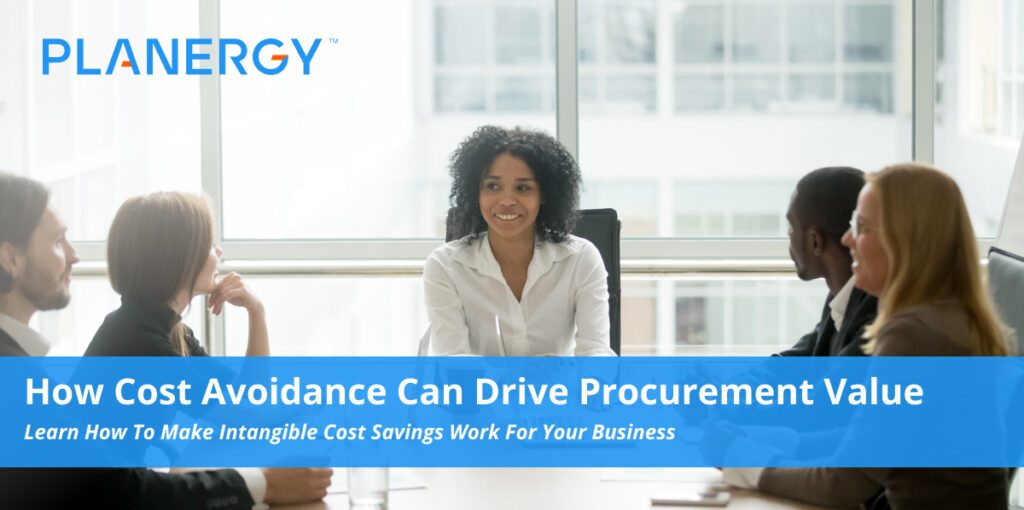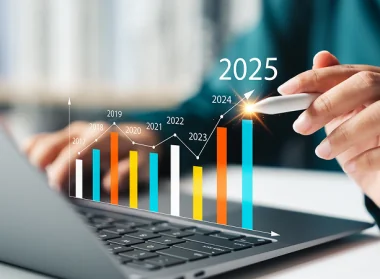Procurement is one of many company functions valued for its role in your bottom line. As more companies turn to cost-cutting as the primary way to increase actual savings and profit margins, procurement strategies and function have become more prominent.
As many chief financial officers, or CFOs, focus solely on profit and loss, or P&L, procurement’s true value may be missed.
Yes, procurement can save money by using more affordably priced goods or work to negotiate discounts with suppliers, but there is something to be said for the value they bring to the table through their cost avoidance, too.
What is Cost Avoidance?
Cost avoidance refers to actions taken in an effort to reduce future costs. Also known as intangible cost savings, because these actions don’t appear to have a direct impact on your company balance sheet, these actions can still make a major positive impact, despite the fact they will never be shown on financial statements.
Examples of cost avoidance include:
- Adhering to the appropriate equipment maintenance schedule to keep everything in good working order and prevent breakdown.
- Changing the equipment maintenance schedule to avoid a work stoppage.
- Reducing a proposed price increase from a vendor.
Cost avoidance is not the same thing as cost savings. Cost-saving measures are actions that lower current spending, resulting in a tangible benefit for the business. You’ll see the amount saved in the financial statements and in the budget.
Actual cost savings are shown in the comparison between current and prior year financial statements, while planned cost savings are shown in the budget.
Cost saving measures are things like: cutting employee overtime, eliminating temporary labor forces, reducing employee benefits, reducing the marketing and advertising budget, etc.
These are typically used to quickly get a handle on debt levels and are an attempt to get the company back on the right track when something has caused finances to veer off the projected course.
Cost avoidance is why the insurance industry works. If you can pay a small premium to avoid a large fee in the future, that you may or may not have the money to address at that time, it’s a worthy investment. By taking steps to avoid claims, you’re avoiding an increase in your premium.
Why Cost Avoidance is Important in Any Business
It makes sense to save money wherever you can – and hard savings on the P&L are never a bad thing. But, cost avoidance matters, too.
It’s important because:
Strategic procurement processes often improve quality and business operations. There’s no way to quantify that in traditional savings calculations.
Generally speaking, procurement handles compliance issues, transparency, and oversight when sourcing.
Because of this, procurement function plays a major role in reducing costs associated with risk. Optimal risk management is critical for managing your company’s cash flow.
Cost avoidance typically addresses strategic spend, and often times there is no comparable purchase to review.
Procurement and Cost Avoidance
Hard savings, calculated as the difference between current and prior year spend for the same (or similar) recurring purchases, don’t have much room for estimation.
Cost avoidance, which can be considered soft savings, on the other hand, has plenty of room for this when it comes to assigning a value to any activity.
As such, procurement must work with finance and corporate leadership to define a clear approach to calculating cost avoidance. Doing this ensures alignment with the P&L and can generate more corporate cost efficiency.
Additionally, an important measure to reduce expenses is conducting a cost avoidance analysis.
How Cost Avoidance Can Drive Procurement Value
Depending on your organization, you can use one or more of these cost avoidance measures to help improve operating budgets.
-
Negotiation
When it comes to one-off expenses, such as investing in new equipment or technology, or a construction project, procurement can often negotiate prices lower than the initial quote.
While negotiation isn’t usually a tactic used on recurring purchases, it is possible to negotiate free freight with one or more suppliers to save on future freight costs.
-
Substitutes
Procurement knows the importance of having multiple vendors on tap for sourcing the same goods and materials because you never know when shipments will be delayed that could cause issues with production.
Because of this, they can often find substitutes for many of the materials the company uses.
These substitutes, for instance, could be the same cost, but provide better quality or efficiency, translating to more savings in the end.
Changing the brand of lightbulb your company uses in production or warehouse could increase energy efficiency and reduce overall energy costs.
-
Price Protection
By working magic with suppliers and contract management, procurement can often delay price increases, or at least slow the rate of cost increases.
If a certain good or material is forecasted to increase, procurement can include price protection provisions in contracts with their sources to help mitigate the potential increases in price.
-
Continuous Improvement Savings
Procurement not only helps the company save money by signing long-term contracts to lock-in pricing or secure discounts, but they can also include continuous improvement savings requirements.
In this case, the contract requires suppliers to create methods to reduce total costs through labor reduction, standardization, and more.
For example, Walmart secured savings by encouraging a manufacturing company to automate production. The price of a fan dropped from $20 to $10 over a decade because of this and other changes.
-
Value-Add
Value-Add is something we see in the consumer world all the time. When Home Depot offers free installation with a carpet or flooring purchase of a certain threshold, or when T-Mobile added Netflix, and their sister brand Metro PCS, recently rebranded to Metro by T-Mobile, added Amazon Prime, to their service plans, that translates to added value for consumers.
Considering there are many T-Mobile customers who subscribe to Netflix, and many Metro T-Mobile customers who are also Amazon Prime customers, those people can still get the services they love, now included on their cell phone bill to save a bit of extra cash.
Your procurement department can do the same thing, including provisions in contracts with suppliers that offer value-add, saving you money.
When you invest in that new piece of equipment, so you can increase production, procurement could include a clause that says the vendor will also include installation and/or maintenance services free-of-charge.
Without that value add, you’d have to pay for installation and service costs anyway, so there is instant savings that aren’t necessarily seen on the balance sheet.
By shifting to a cost avoidance mindset in your organization, you may find it’s easier to make better business decisions, and you’ll have a better grasp on your cost structure and overall financial health.




